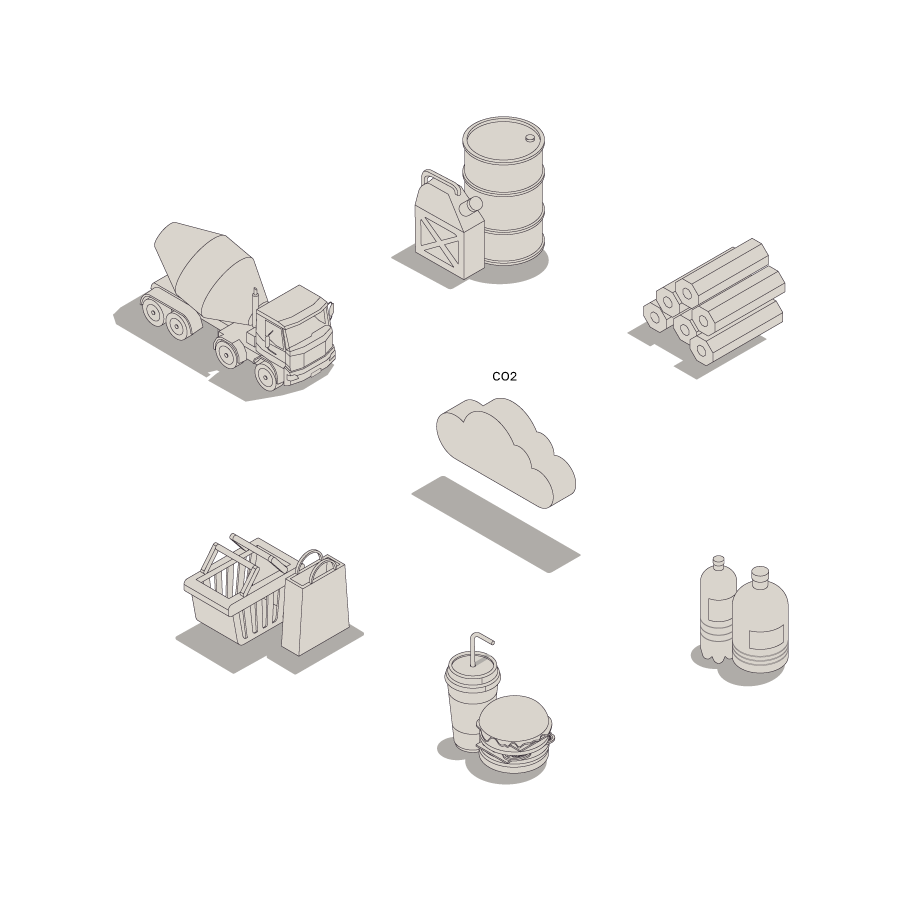-
FUELS

Synthetic fuels – or fuels produced directly from directly captured CO2 and clean hydrogen – are the “holy grail” of CO2 utilization. And for good reason – they could deliver over 10 billion tonnes of annual CO2 demand. Companies large and small – including Lanzatech, Shell, Volkswagen, and more – are focused on scaling up synfuels for wide scale liquid fuel applications (aviation, road transport, shipping).
-
CARBON FIBER

For centuries, the backbone of global structures has been wood, and more recently steel, aluminum and concrete. Carbon fiber is a high-performance alternative to these traditional materials that is already being used in the automotive, aerospace, and clean energy space. Innovations are focused on manufacturing and production approaches to lower cost – including SkyNano and more.
-
PLASTICS & CHEMICALS

Fossil fuels composed of carbon (“C”) and hydrogen (“H”) molecules form the backbone of the chemical industry. Several chemicals – including polyurethanes, and polyethylene, and polypropylene – are comprised of CO2‘s components, via either CO (carbon monoxide), or methanol (CH3OH). Transitioning from fossil fuels to DAC-sourced CO2 production could create 100s of millions of tonnes of CO2 demand annually.
-
FOOD & BEVERAGE

The food & beverage industry is currently one of the largest consumers of CO2. CO2 is used within products (e.g., carbonated beverages) along with supporting food processing (e.g., meats). The future of carbon utilization industry could look like food and beverages, sourced and manufactured directly from CO2. Innovators in this space include Solar Foods, Air Company, and more.
-
CONSUMER GOODS

Nearly 70% of today’s clothing industry is made from synthetic fibers – or those produced from fossil fuel feedstocks. Beyond clothes, hydrocarbon-based products show up throughout consumer goods (e.g., sunglasses, bags). Innovators – including Rubi Labs and Twelve – are pushing for a fully circular future with the reuse of products and the creation of products from captured CO2 vs. fossil fuels.
-
CONCRETE

As of 2022, the world consumes approximately 30 billion tonnes of concrete annually. New concrete technologies can, in fact, blend CO2 into the manufacturing and building process – up to 5% tonne-per-tonne. This could unlock nearly 1 billion tonnes of additional CO2 utilization demand. Innovators include CarbonCure, Solidia, and more.

Synthetic fuels – or fuels produced directly from directly captured CO2 and clean hydrogen – are the “holy grail” of CO2 utilization. And for good reason – they could deliver over 10 billion tonnes of annual CO2 demand. Companies large and small – including Lanzatech, Shell, Volkswagen, and more – are focused on scaling up synfuels for wide scale liquid fuel applications (aviation, road transport, shipping).

For centuries, the backbone of global structures has been wood, and more recently steel, aluminum and concrete. Carbon fiber is a high-performance alternative to these traditional materials that is already being used in the automotive, aerospace, and clean energy space. Innovations are focused on manufacturing and production approaches to lower cost – including SkyNano and more.

Fossil fuels composed of carbon (“C”) and hydrogen (“H”) molecules form the backbone of the chemical industry. Several chemicals – including polyurethanes, and polyethylene, and polypropylene – are comprised of CO2‘s components, via either CO (carbon monoxide), or methanol (CH3OH). Transitioning from fossil fuels to DAC-sourced CO2 production could create 100s of millions of tonnes of CO2 demand annually.

The food & beverage industry is currently one of the largest consumers of CO2. CO2 is used within products (e.g., carbonated beverages) along with supporting food processing (e.g., meats). The future of carbon utilization industry could look like food and beverages, sourced and manufactured directly from CO2. Innovators in this space include Solar Foods, Air Company, and more.

Nearly 70% of today’s clothing industry is made from synthetic fibers – or those produced from fossil fuel feedstocks. Beyond clothes, hydrocarbon-based products show up throughout consumer goods (e.g., sunglasses, bags). Innovators – including Rubi Labs and Twelve – are pushing for a fully circular future with the reuse of products and the creation of products from captured CO2 vs. fossil fuels.

As of 2022, the world consumes approximately 30 billion tonnes of concrete annually. New concrete technologies can, in fact, blend CO2 into the manufacturing and building process – up to 5% tonne-per-tonne. This could unlock nearly 1 billion tonnes of additional CO2 utilization demand. Innovators include CarbonCure, Solidia, and more.






